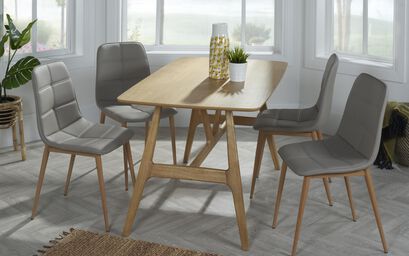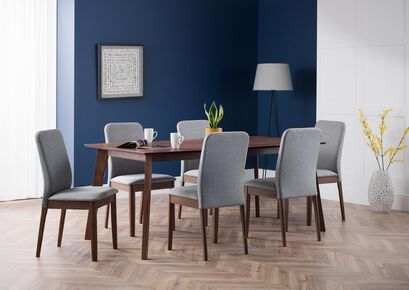Trends
Japandi interior design: 5 tips to create the look in your home
A fusion of Scandi and Japanese interior styling, it’s the answer to creating spaces that are calm and minimal, yet perfectly complete.
30h December 2022
Interior design styles come and go faster than you can imagine, which is an opportunity to embrace the trends you love with a new-found twist. And if you’re a fan of Scandinavian Design, the good news is, it’s back with a Japanese-inspired flair that’s delivering stunning results.
What is Japandi interior style?
It’s based on the principle of creating spaces that are simple and functional. There’s no room for clutter or extra design details. Everything that’s within these spaces serves a purpose and isn’t there to add an additional layer of design flair.
As for what Japandi interior design looks like in reality, think:
- Neutral colours – e.g. white, cream, beige, grey, taupe
- Sleek lines
- Simple shapes
- Minimal furniture
- Natural materials – e.g. cotton, wood, linen, leather
- Natural accessories – e.g. dried or freshly-cut flowers and plants
The Scandi part of this trend is present in the cosy and rustic styling, neutral tones and natural textures. Meanwhile, the Japandi influence is brought to life through simplicity and a Marie Kondo-inspired outlook.
Stripping back a space so that it only contains the bare essentials may sound quite basic and far from inviting, but what’s achieved is the total opposite – sanctuary-like places that are comforting and welcoming minus the disruption of clutter and clashing design choices.
What wood is used for Japandi?
Wood plays a big part in making Japandi interiors happen. Integrating wooden furniture into your design vision will instantly make it more Japandi and Scandi influenced at the same time, given the fact wood is a natural material.
Any form of wood is a must. And it can be used everywhere too. For instance, wooden floors, wooden tables, chairs and coffee tables, headboards, sideboards, book shelves and so on (just remember not to pack your room with too much furniture because it needs to be clutter-free). Japanese design tends to incorporate darker wood, while Scandi design features lighter, untreated wood – it’s entirely up to you which option you go with.
5 top tips for Japandi style spaces
Tip 1: Keep it simple
The simpler, the better. In Japandi world, there is no space for elaborate eye-catching shapes. Instead, straight lines, soft edges and sleek design reign alongside wood and neutral materials.
In turn, slim pieces incorporating sleek legs, take up less space, helping create that clutter-free vibe.
Tip 2: Don’t stray away from neutrals
Sticking to just neutral colours may sound boring, but don’t forget there are plenty of choices and they can be layered to create more depth.
Neutral colour palettes are key for creating that Zen-like vibe that goes hand-in-hand with Japandi interior design.
Tip 3: Get closer to nature
By using natural materials, wherever possible. For instance, linen cushions, wooden panelling or plant stands, leather-upholstered seating, rattan or wicker storage baskets, bamboo lightshades, etc.
Flowers and plants are a key part of the Japandi vision too, naturally helping purify the air around them and adding a flash of grounding greenery and colour at the same time. (For more insight read, 10 of the best indoor plants for living rooms)
Tip 4: Have a clear out
This tip shouldn’t come as a great surprise to you as I mentioned it earlier, but having zero clutter is one of the main foundations for all Japandi interiors.
It also sits at the heart of hygge, the Scandinavian concept of creating areas that embrace rustic minimalism and are uber cosy. Review your space and keep practical items over those that are more sentimental or just there for design effect.
Tip 5: Do add some soft furnishing ‘extras’
Stripping everything back, so you’re left with only a few key pieces, can easily make rooms feel too empty and uninviting.
However, the Japandi interior design concept doesn’t say you can’t have any soft furnishings, you just need to limit them and make sure they feature natural materials and neutral colours.
With this in mind, you may want to add a shaggy rug, sheer curtains and linen throws and cushions.
Japandi interior design top picks
Japandi interior design is here, and it’s here to stay, transforming living spaces into welcoming and serene places you’ll want to spend all your time in.
Have a go and see how you get on. I’d love to see the end result, share it over on social using #myscshome
Never miss another sale! Sign up to our emails today






.png)